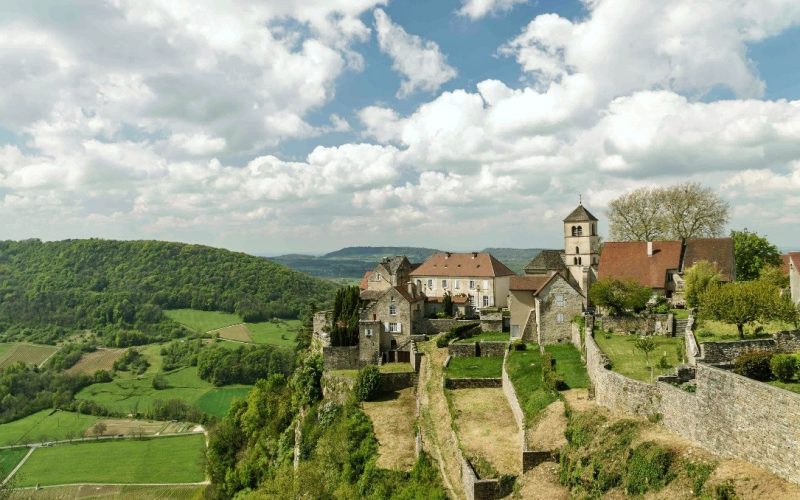The Jura is a small area in the east of France, a must-see, where excellent red and white wines are produced. Among the latter, the trosseau, poulsard and pinor noir grape varieties offer us subtle wines that we would not stop drinking. Among the whites, chardonnay and savagnin produce magnificent wines, many of them of great complexity, as is the case of vin jaune or yellow wine, a name that has its origin in the golden colour it presents.
Because of its complex production and the nuances of its final result, vin jaune is the most characteristic wine of the Jura. It is made exclusively from the Savagnin grape variety, after a late harvest. After fermentation, the wine remains for at least five years under a veil of indigenous yeasts in oak barrels which are not completely filled or refilled during this period. Thus, the concentration of aromas and flavours is favoured by natural evaporation. This veil (voile) develops due to the environmental conditions of the area, without the intervention of the winemaker. The prolonged contact between the wine and the veil confers its own, dry, powerful notes, reminiscent of grappa and dried fruit aromas. Vin jaune has many similarities with the fortified wines of the Marco de Jerez.
Vin jaune is released on the market after a minimum of six years and three months from the harvest and is marketed in a bottle with a capacity of 62 centilitres, known as clavelin. This bottle format is the only one authorised for marketing by the European Union. The volume is marked because this is traditionally considered to be the amount of wine remaining from each initial litre, after evaporation during the ageing phase.
The AOC Château Chalon is the mecca of this type of wines, although they are also produced in other appellations of the Jura. The complexity of yellow wines increases with time, so it is advisable to drink them after a few years, as they evolve in a sublime way. Because of their power, they go very well with white meats and also with fatty and strong soft cheeses, although not so much with soft fish. Of course, it is never a bad option to enjoy them dry, in meditation.
